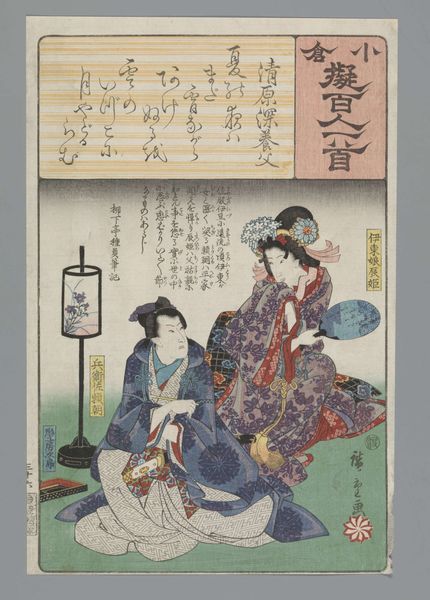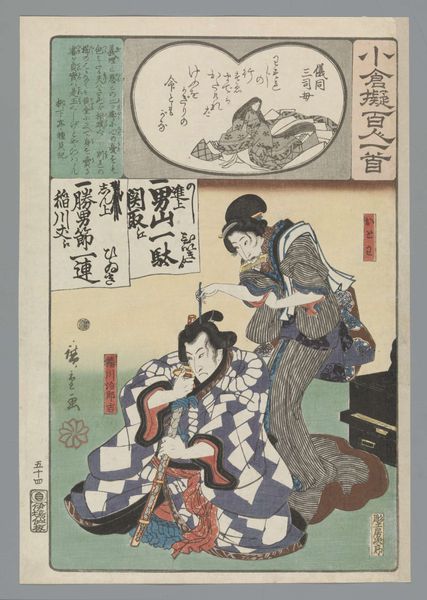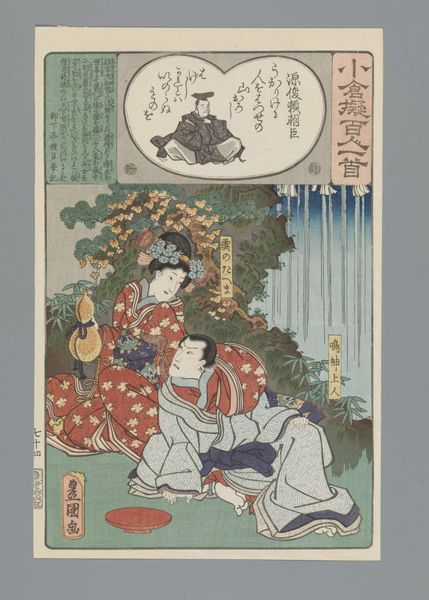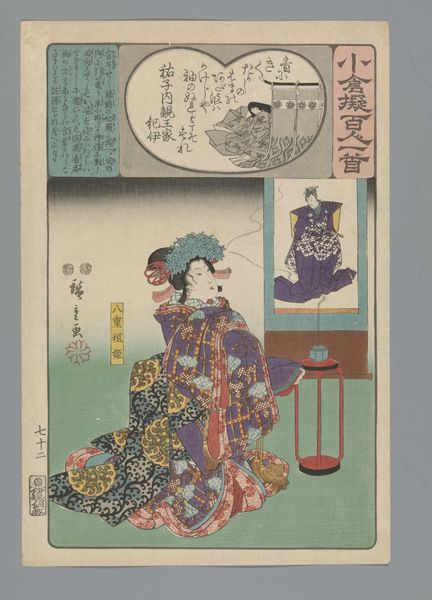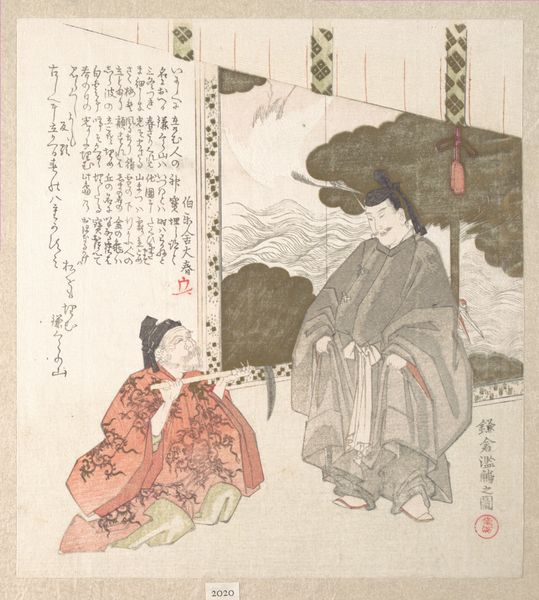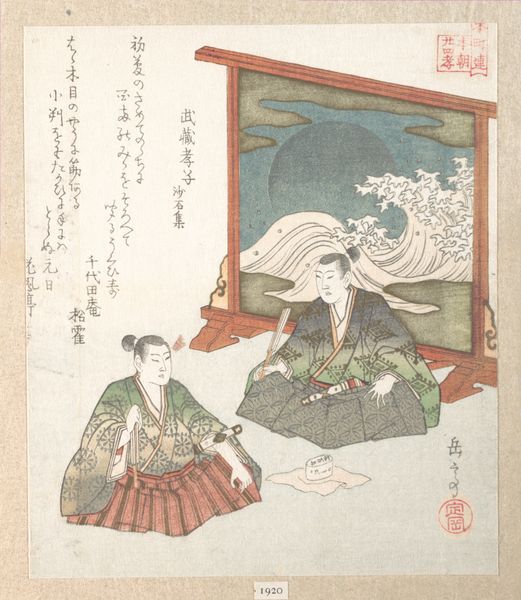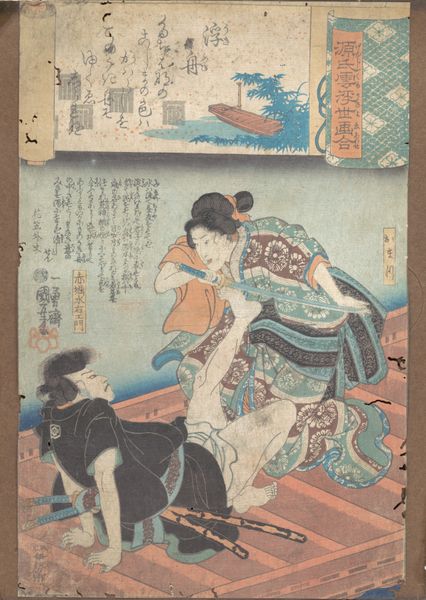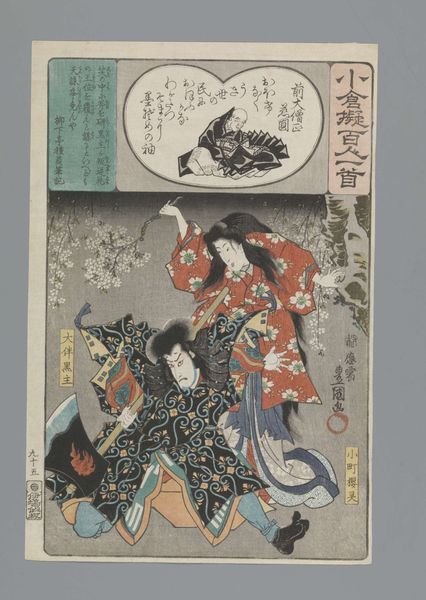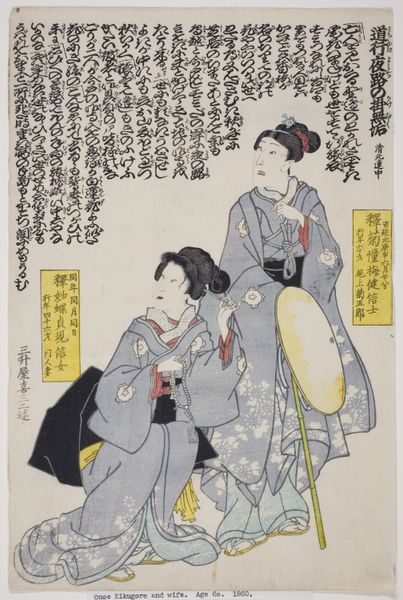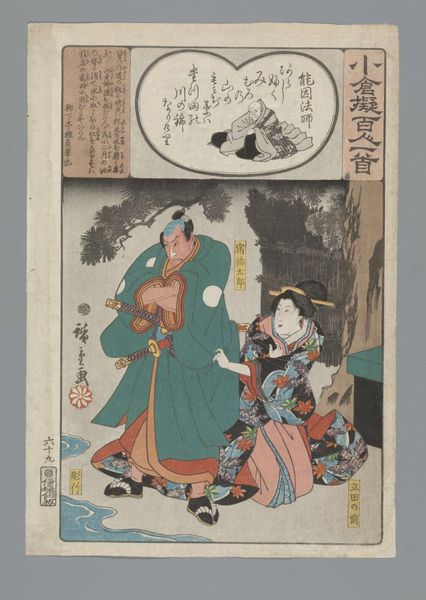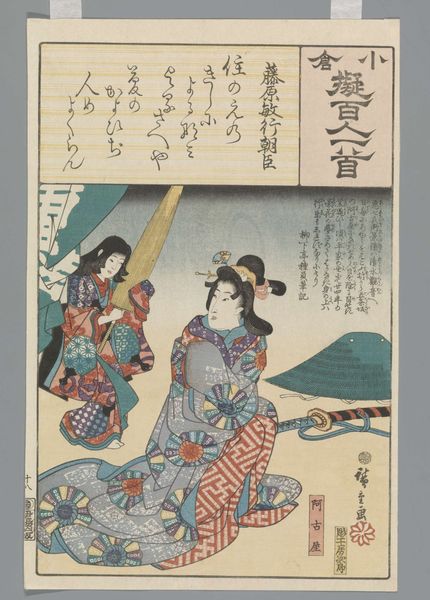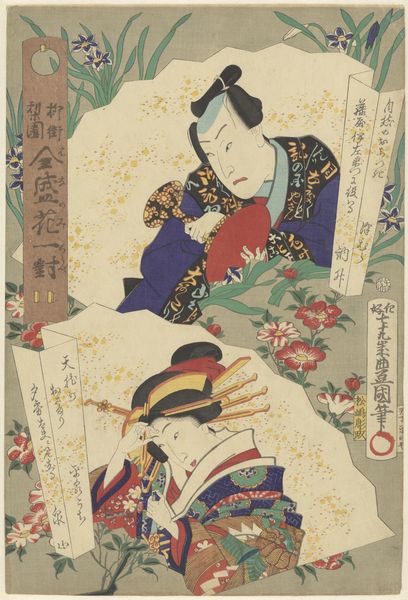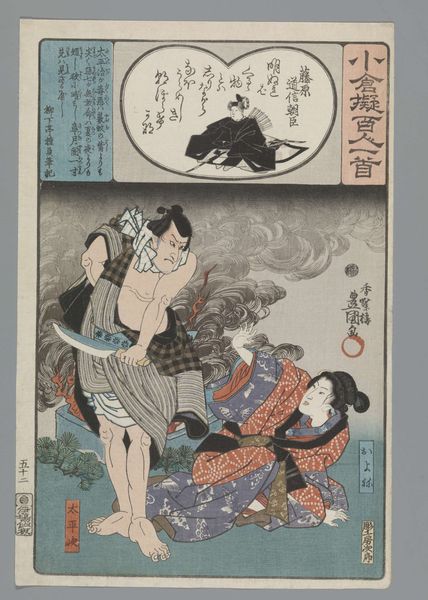
print, woodblock-print
#
portrait
# print
#
asian-art
#
ukiyo-e
#
figuration
#
woodblock-print
#
genre-painting
Dimensions: height mm, width mm
Copyright: Rijks Museum: Open Domain
Curator: Here we have Utagawa Hiroshige's "Ogura Imitation of the One Hundred Poems," a woodblock print from around 1847-1850, currently residing in the Rijksmuseum. Editor: It has this interesting dream-like quality. The colour palette feels very considered; everything is unified with a sense of blue melancholy. It's surprisingly subtle for a genre painting. Curator: It’s from a series exploring classical poetry through contemporary scenes. You have that blend of high and low culture, quite typical of ukiyo-e prints that were widely popular among the merchant classes. The print as commodity. Editor: Yes, precisely. And I am thinking about the production. Look at the intricate patterns on their kimonos! Each element required skillful carving on the woodblocks and careful application of pigments. What did these processes demand of the artisan-craftsmen who produced these objects at scale? Curator: The publisher's role here is paramount. They dictated the subject matter, employed the artists, oversaw production, and distributed the prints. These were commercial ventures through and through and we might ask how power was wielded in the publishing industry. Editor: The characters feel a bit constrained and static as subjects, actually. Their body language hints at tension. Are they confined by societal roles in ways linked to their roles in its creation and, later, its exchange? I mean, these are constructed representations through artistic license. Curator: Possibly! These prints did often serve as a reflection—and occasionally a critique—of social mores, providing commentary through ostensibly simple genre scenes. The woman looks somewhat oppressed. Editor: Oppressed perhaps. But materially elevated! We can't ignore that she is wrapped in a finely-made and printed object whose construction necessitated collaboration across class lines. Curator: I find it fascinating how this artwork captures a particular moment in Japanese cultural and economic history. It's a great reflection point for the Edo period. Editor: And for me, I appreciate the blend of labor, material, commerce, and artistic practice evident in it.
Comments
No comments
Be the first to comment and join the conversation on the ultimate creative platform.
